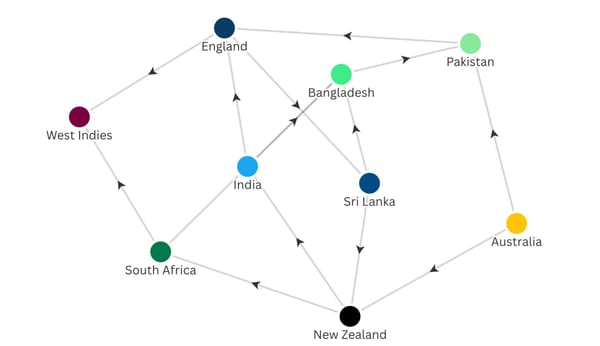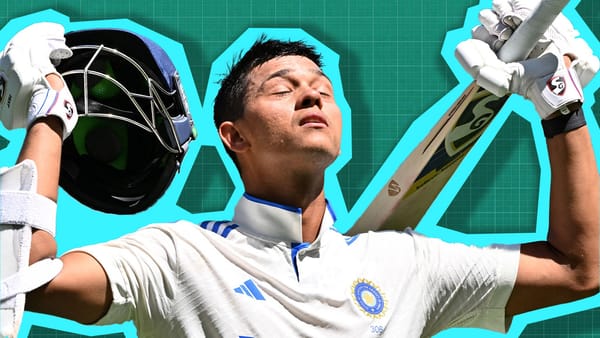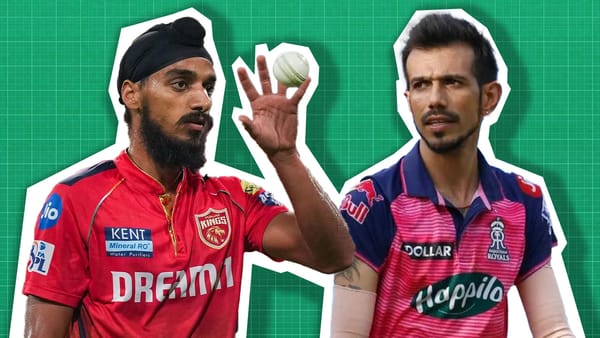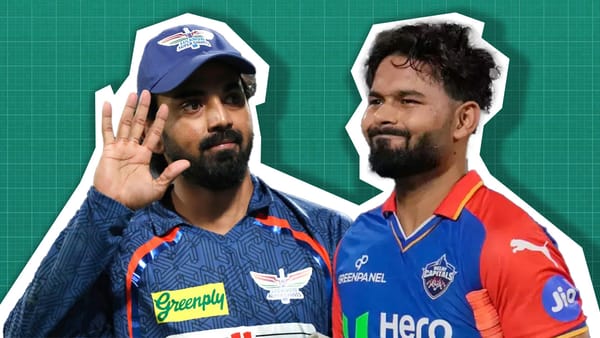Geoffrey Boycott and the structure of modern cricket
After Boycott's remarks on England's batting recently I took a deeper look at what he said.
Geoffrey Boycott has a column in the Daily Telegraph. It's one of the few things left he is allowed to do. The BBC finally distanced from him.
Though they did so years after his Domestic Violence conviction in France. And they even kept him on even after he said he would need to blackface to get a knighthood.
In this column - from what they call in the UK a paper of record - is this line "I played around 37 three-day matches in a season". This was sent to me by a friend, a person who likes things to be accurate. And so he went and looked at this, he couldn't find a year where Boycott went beyond 28 first class matches in a year.

However, Boycott does say matches. There might be other red ball three-day matches he played. The thing is, on Cricket Archive, they have almost all the cricket games played by anyone of note. They miss some, I am sure.
But even when factoring in Test Matches, County, first-class friendlies, Second XI Championship and Minor Counties games, and the all-important jazz hat games, there does not seem to be a year where he passes 29. Club cricket was one day in England, so he doesn't mean that. So it is possible he is misremembering or counting some single-day matches in one season. But I am assuming Boycott is wrong here. Even if he played one season of 37, he certainly didn't play that many regularly.
And you may wonder why it matters, because for many of us, listening to men who retired before we were born, or just after in this case for me, on modern cricket is rarely informative. No one is doubting Boycott's batting talent; he has the seventh most runs for England and he scored an astonishing 151 first class hundreds.
But he was also once tricked into doing a video on a (fake) epidemic about Especially if that man was once tricked into doing a video to tell kids to get out of bed in the morning. It isn't that Boycott doesn't possess a lot of cricket knowledge, it's that by not keeping up with the times, most of what he says is no longer relevant.

For instance, this entire piece and the reason he is mentioning his perhaps mythical 37 red ball matches a season is because he's upset that T20 cricket is ruining batting.

I am still yet to hear a good argument why it isn't ruining bowling, which is kicking batting's arse, but that is for another day.
Here he talks about the structure of cricket, and how it is driven by money and T20. This is of course, ignoring the many times before and during his career when money drove cricket. In fact, from the time they put a fence up at the Oval, money drove cricket. As I assume it also did when Boycott chose to play in South Africa during Apartheid.
Let's get to the nub, Boycott thinks modern cricketers don't play enough red-ball matches.

And I get it. But in 2019, the last year before Covid did all sorts of weird things, English players were in 14 four-day games.
So 56 days of cricket a summer. In 1986, Boycott's last year in County Cricket, there were 24 three-day matches for 72 days.

When he started his career county cricket was playing 32 three-day games a year, so there is no doubt there is less now. And probably rightly. My friend tells me there were 39 first-class matches for Yorkshire between 29 April 1961 and 15 September 1961. 117 days of scheduled cricket in a 140 day period.
But here is the most important thing, what other first class competitions in the world have teams playing this much red-ball cricket. Ranji Trophy was nine at maximum. The shield in Australia is ten, which is the same of the franchise tournament in South Africa. New Zealand is only eight in the Plunkett.

If just playing the most first class games was important England would have been number one since the beginning of time until now. Because they have always played the most top level cricket. They probably always will.
Tom Blundell is 31, and he has managed 84 first class matches in his career. Ollie Pope is 24, he already has 68.

The idea that English players aren't playing enough first class cricket is not true.

Here he talks about how Joe Root is a better player for not being involved in T20. Root is extraordinary, but so is Williamson, who plays it all the time. I think because of Williamson's elbow, he'll have a shorter career, but these are two all-time greats, and one wants to play more T20, and the other is playing it.

Here Boycott talks about how batting has changed because of T20 cricket. And that is undeniable, of course wheat he and others never say is that DRS and the West Indies also changed batting. As did covered wickets, front-foot no balls and helmets. Only DRS was something Boycott didn't play through. He lived through the game changing, professional athletes evolve with it, or they get a new job. And I am old enough to remember Boycott moaning about how ODI cricket ruined batting in the 90s, and then we had one of the greatest batting eras ever.

He is right though; modern players certainly play too much white-ball cricket when they are young, allowing that to corrupt their mind.
In fact, down below I'll show you a bloke who started his career after the T20 boom, and had to juggle a very white ball diet early on his career which has clearly ruined his red-ball runs.

Oh no, this is Root. Who is the same age as rampant scooper Jos Buttler, and younger than other adventurous players like Dilshan, Maxwell and AB.
Root has actually taken some of his white-ball skills into the red-ball game, most notably the ability to rotate strike like he's in perpetual motion.

This Boycott piece is essentially all about Root, and he must forget that Root started as an opening bowler in Yorkshire's T20 team. That is not quite true, but it is how I like to remember him. Root played an exceptional innings at Lord's, but remember there were two hundreds scored in this match. The other was by Daryl Mitchell.
Mitchell had one warm-up game to prepare for this series, but what was he doing in April and May, well he was playing for Rajasthan in the IPL. Mitchell went IPL, warm up match, hundred at Lord's and hundred at Trent Bridge. At Lord's he had a top-order falling apart, twice, and the ball moving around, he over came that, played an incredible innings and gave his team a chance they never really saw coming. At Trent Bridge he had a top order who all got starts and left early, and he looks to have batted England out of the game.
In the first innings at Lord's, New Zealand had only one batter stand up, and he made a stoic 42 not out as he ran out of partners.
That is right, before de Grandhomme's heel., became the heel, twice. He was pulling them to a first innings good enough to almost steal a lead.
The same de Grandhomme who has a career strike rate go nearly 160. And has now played for quite a few T20 sides around the world since leaving Zimbabwe.

Boycott sights Bairstow's innings to prove his point out about modern players going at things different because of T20. It's weird because he is older than Root. But more importantly that was a tactical call by the team. You could see Stokes did the same thing, And he also thanked Bairstow for his innings after the game.
The truth is that England's players are having to juggle white-ball cricket alongside red-ball cricket. And while you could claim that the quality of cricket is higher due to professionalism and more people playing the game. Players in Boycott's era were certainly more specialised in red-ball cricket. Although that said, Boycott also played 313 List A games in his career. Though, they were with a red ball, and were nothing like T20 or ODIS of today.
As for Joe Root, the man Boycott has praised so many times in this piece, I had a look at how many T20s he'd played by the time he was 25. Because Crawley and Pope, who both get it in the neck in this piece not because of their technical problems, but because of how much T20 they play.
Well at the age of 25 Root had played 41 T20s. Crawley currently has the same, and Pope just a couple more. But look at how many more one dayers Root played than the other two.

When he was developing as a young player, he was at an all-you-can-eat smorgasbord of white balls. The amount of cricket matches only an English summer will try cram in.
And in the end it doesn't matter if Boycott's 37 three-day games a summer is real or not. Because there is no way to fit that much cricket in anymore, and it also quite clearly is not a good idea. Although it is worth mentioning if they played 37 matches per summer, that was probably driven by money, right?
It's probably true that Boycott played cricket in South Africa several times during apartheid because of the money too.
The problem with Boycott's article is his basic reasoning is correct. There is a problem with the structure of English cricket. But it doesn't help anyone when a former player talks about the old days. Because they were also a bit crazy, and it would be untenable now regardless.
The current system is probably worse, certainly more accidental, and definitely scattered. But it is the one Root came up in. Remember he has played 20 over cricket, 100 ball Cricket, 50 over cricket and 40 over cricket just at home in England. And he turned out all right. Modern cricket also gave us Babar Azam, Virat Kohli, Kane Williamson, and Steve Smith.
Like Boycott's era, it is not perfect. But so far in his career, even with all the whack-it T20 that he played as a wee lad, Root is averaging more than Boycott in Test cricket.





